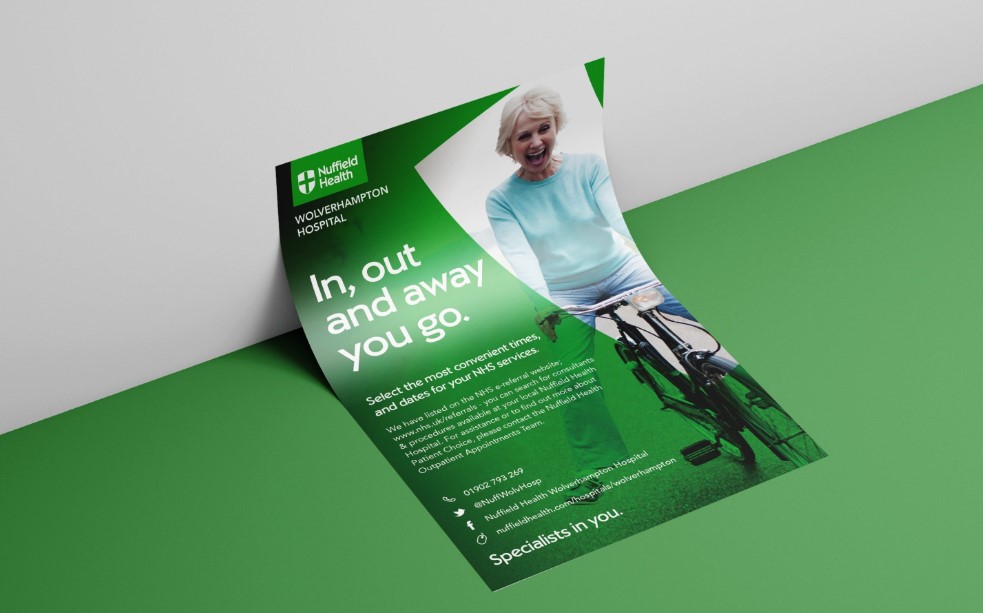The Digital Age – characterized by instant communications, virtual realities, and intangible interactions – has undeniably revolutionized the way businesses market their products. As tweets and influencers, clicks, and algorithms have come to dominate the marketing lexicon, the traditional tools – newspapers, billboards, and leaflets – have been overshadowed, sometimes dismissed as relics of the past.
However, these supposed “relics” still carry weight, offering advantages that digital methods sometimes cannot match. This exploration begins with a seemingly simple, yet profoundly effective tool: the leaflet. Amid the cacophony of digital notifications, could the silence of paper bear a compelling message?
Evolution of Advertising
Centuries have witnessed advertising evolve in response to societal changes. From ancient papyrus scrolls advertising local markets to the transformative power of the Gutenberg press in the 15th century, print advertising became more than just information—it became art.
As society’s information conduit, print’s role was unparalleled for ages. However, as the 21st century ushered in the Digital Age, the swift rise of social media platforms and online content saw digital advertising poised as the next big thing.
In this transition, many marketers hastily crowned digital advertising as the new monarch, and print began to be viewed through a nostalgic, yet dismissive lens, often perceived as archaic and less potent.
Challenges of Digital Advertising

Source: udacity.com
Digital advertising, promising pinpoint accuracy, and vast reach was welcomed with open arms. However, it soon became evident that for all its promise, it had pitfalls. The modern consumer, armed with smartphones and continuous connectivity, is deluged with an incessant stream of ads – be it banners on websites, autoplay videos, intrusive pop-ups, or carefully curated sponsored content.
This unrelenting barrage has led to phenomena like ‘ad fatigue,’ where audiences, weary from overexposure, simply scroll past ads without a second glance. Added to this is the widespread adoption of ad-blockers, which directly curtail ads from being displayed. While the digital domain offers access to vast global audiences, its actual message and impact are increasingly diluted by these formidable challenges.
The Tangibility of Print
In our evolving touch-screen-dominated world, where swipes and clicks dictate our actions, the power of tangible touch has been shadowed. There’s an undeniable allure in the tactile experience of holding a print material, such as a leaflet or a brochure.
This simple act invokes a sensory connection, fostering a bond that fleeting digital ads can’t emulate. The act of physically flipping a page, pausing to reflect on the content, or just feeling the unique texture of the quality paper isn’t just a reading experience—it stimulates memory retention, fosters trust and builds a stronger emotional bridge between brand and consumer. You can check here how it looks in reality.
Targeting a Local Audience
Digital marketing’s scope, in its bid to be universal, sometimes loses sight of localized nuances. The vast, borderless expanse of the digital realm often misses out on the microcosmic details of immediate surroundings. Enter leaflets. With their inherent localization, they offer an intimacy and specificity that broad, generic digital campaigns sometimes gloss over.
Imagine the efficacy when a neighborhood cafe uses leaflets to announce its grand opening, paired with a digital ad for broader reach. The message to the local populace is potent: “We’re right here, rooted in your community, and we’re for you.”
Overcoming Digital Noise

Source: cornerstonevision.com
In the sprawling marketplace that is the internet, where everyone competes for fleeting attention, distinct voices often get subsumed in the cacophony. Here, the unassuming leaflet shines. Amid the barrage of digital distractions, leaflets serve as focused, personal messages, beckoning the reader to engage devoid of pop-ups or competing tabs.
They provide a serene space for brands to communicate, standing apart from the overwhelming ‘digital noise’, inviting consumers to engage at their preferred pace, and ensuring the message is both seen and absorbed.
Creating a Multichannel Approach
In the dynamic landscape of modern marketing, adaptability is key. No longer can brands be rigid, adhering strictly to one medium. Success necessitates a flexible “both-and” mindset rather than a restrictive “either-or” approach.
By weaving together the vast outreach of digital with the tangible impact of mediums like leaflets, brands can craft a harmonious multichannel strategy. This blend ensures a broader reach while preserving the deep, personal touch, thus amplifying the message and enhancing audience engagement across multiple touchpoints.
Measuring Effectiveness
There’s a fading misconception that print, unlike its digital counterpart, eludes accurate effectiveness measurement. In reality, print’s efficacy is very much quantifiable.
With today’s innovative integrations, such as QR codes embossed on leaflets redirecting to specific online landing pages or unique redemption codes facilitating special in-store offers, businesses can precisely track the traction generated by their print campaigns. These tools not only provide tangible metrics but also seamlessly merge the physical and digital realms.
Case Studies and Success Stories
While theories and assertions carry weight, nothing speaks louder than real-world success. From local gyms that experienced an unprecedented spike in memberships post a targeted leaflet drop, to pop-up stores that saw a surge in footfall after a strategic distribution, the evidence is undeniable.
These real-world instances serve as robust testimonials to the tangible and substantial impact leaflets can wield, showcasing their enduring effectiveness even in our hyper-digital era.
Designing Compelling Leaflets

Source: depictcreative.co.uk
Just as in any form of advertising, with leaflets, design takes center stage. The design of a leaflet isn’t merely about aesthetics; it’s a strategic endeavor. Effective leaflets are a harmonious marriage of compelling visuals, evocative imagery, and razor-sharp messaging.
Utilizing bold, relevant imagery, crafting clear call-to-actions, and weaving them into a reader-friendly layout can metamorphose a humble piece of paper into a persuasive marketing powerhouse, resonating deeply with its intended audience.
Sustainability and Eco-Friendly Printing
Today’s consumer is not just focused on products but also the ethos behind them. The environmental narrative is increasingly becoming central to brand strategies. Recognizing this shift, progressive businesses are transitioning to eco-friendly printing processes, sourcing recycled paper, and opting for sustainable inks.
This shift not only reduces their ecological footprint but also resonates with a growing tribe of eco-conscious consumers, fortifying their brand image as one that’s both progressive and responsible.
Conclusion
In the frenetic dance of digital pixels and pop-ups, there lies a timeless elegance in the static simplicity of print. Leaflets, often underestimated, have proven their worth time and again. As the marketing world races forward, it would do well to occasionally glance backward, drawing strength from tried and tested methods and integrating them into the new age tapestry.











